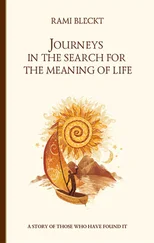An investigation is apparently under way into the integrity of the ex-lover’s research. The results are due to be published any day.
A small South Pacific island nation of half a million, which had been colonized in the nineteenth century, suffered for many years under Spanish rule, and finally gained its independence by referendum in the late 1950s, not long ago founded its first university. Because of its size and relative poverty, the island was home to few trained academic scholars, and so when it came time for the government to select a university president, it chose a self-made intellectual and hero of the nationalist resistance effort. This man, a serious, imposing figure in his late fifties, read many hundreds of books in preparation for his job, and in addition to running the administration of the college taught a number of classes as well.
Meanwhile, the university here in our town mounted a conference on higher education in the developing world, and invited to it, among other diverse international education officials, the president of the island nation’s university. He left his home with great excitement, flattered to be asked to visit a prestigious American institution, and resolved to return with new ideas for the improvement of his school.
It happens that our town is home to an interesting piece of public sculpture: a scale model of the solar system. At the city center stands a marble pedestal marked with an image of the sun that has been scaled down to the size of a basketball, and within a block are pedestals depicting Mercury, Venus, Earth and Mars, mere specks in comparison. A few blocks away is Saturn, and several blocks more, Jupiter; the outer planets stand more than a mile from the sun.
By chance, our university’s education conference coincided with an exhibition of final projects from its fine arts program, and one of these final projects, the brainchild of a goateed conceptual artist named Mike, was the construction of an additional marble pedestal. The pedestal, which the artist and his friends had installed on a patch of sidewalk somewhere between Saturn and Jupiter, documented a ringed gas giant called Mikeworld, upon which, according to an attached plaque, lived a race of sentient aliens whose enormous bodies were composed primarily of methane gas. The pedestal was identical in appearance to the ones originally commissioned by the city, and was generally thought to be very funny, except by those city officials who would eventually have to remove it.
On a break from the education conference, the university president from the island nation took to strolling about the town, and discovered, as many visitors do, the scale model of the solar system. Delighted, he resolved to walk the length of the sculpture, and inevitably he came upon the Mikeworld pedestal.
The president was not a stupid man, and his understandable initial reaction was disbelief. But because of our university’s excellent reputation, and because his home island had had neither the time nor inclination to develop its own conceptual art, which he would have been hard pressed, given his cultural predisposition, to comprehend, the president decided to believe the sculpture, and returned to his country with the information that another planet existed, and it was inhabited by sentient beings.
It was not long before this information had spawned an academic mini-department of its own, and within a few years a team of astronomers on the island discovered a celestial body they thought might be Mikeworld. It was photographed and written about, and a web site devoted to it soon appeared on the Internet, where conspiracy theorists, ufologists and new age practitioners of all stripes rallied around it, and where I first encountered the blurry photographs. A hypothesis emerged about the origins of the giant gas people: they were said to be pagan gods, in retreat from the heretical techno-avarice of earth.
Eventually all this got back to Mike, the student artist, who has graduated and now works at a restaurant I visit from time to time. The pedestal has long since been removed at taxpayer expense and destroyed. When I asked him what he thinks of all the attention, he told me that he has fielded thousands of collect calls from all over the world, and though he has moved repeatedly and regularly changes his number, he is inundated daily with requests for advice, direction and money, and about once a month he receives a death threat. The hysteria surrounding Mikeworld has ruined his life, and he wishes he had never thought it up.
However, another acquaintance, an employee of the department of public works, has no sympathy for Mike, and in fact insists that the artist, having played God, has gotten exactly what was coming to him.
For some weeks, talk in our town focused on a meteorite that plunged to earth one morning, interrupting the prayers of the devoutly religious family into whose yard it fell. The meteorite was nearly fourteen inches in diameter, making it an unusually large specimen to have been found intact, and immediately drew the attention of our university’s astronomy department. One scientist in particular, who specialized in meteors, comets and asteroids, seemed especially eager to examine the meteorite, and began negotiations with the family to acquire it for the university.
But the family was unwilling to relinquish the object, despite the small fortune the university was offering to pay for it. It seemed that they assigned to the meteorite some religious significance, and had begun to incorporate it into their devotional activities. Through it, they claimed, they were better able to speak to God.
At last the university gave up, and for days little was heard about the meteorite. But a week later, upon returning from church, the family called the police to report it missing. Within hours the meteorite was found in the scientist’s lab, where he had begun to subject it to numerous tests. He was arrested, convicted and sentenced to a short prison term.
Remarkably, the scientist’s defense consisted of his contention that, despite legal precedents to the contrary, the family did not own the meteorite, that in fact it was in the public domain and had been stolen from the town by the family.
Furthermore, he argued, the meteorite was being unfairly subjected to religious beliefs it did not itself hold; it was inherently an object of scientific inquiry, and its belief system was that of science alone. This defense was presented without the assistance of a lawyer.
The university, appalled by the scientist’s actions and his assignation of a belief system to a meteorite, did not renew his contract for the following academic year. The family, on the other hand, has abandoned their faith and begun a new religion based on the meteorite’s status as a religious artifact given to them by God. They have moved out to the country and are said to have attracted several hundred worshipers to their compound.
A local professor was honored, and a national newspaper ran a photograph of him writing on a chalkboard before a classroom full of students. Not long afterward, the professor was asked to speak at the annual meeting of a club for left-handed persons. In his letter, the club’s president explained that he had seen the photo and noticed the professor’s left-handedness; he believed the professor was a credit to “lefties” and would make an inspiring and enlightening guest. Included with the letter was a booklet listing the accomplishments of left-handed people, photocopied articles asserting the creative and intellectual superiority of lefties, and a catalog of whimsical products for the left-handed, including special coffee mugs, pens, and eating utensils with pro-left-hand messages printed on them.
Читать дальше










